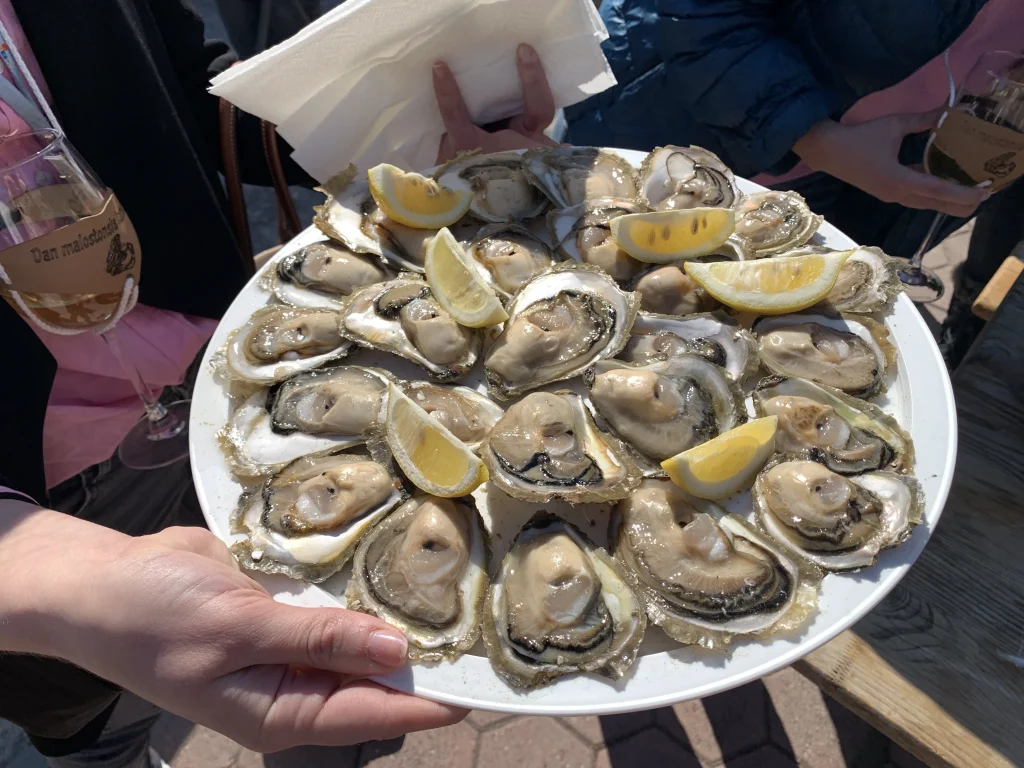Two years ago this month I arrived in Split, with a mission to visit to the Ston oyster festival and the town’s famous walls on top of my list. Foodies know the tradition that you should only eat wild oysters during the months that contain the letter “r” in the name – from September to April – and this time of year is peak season for fresh oysters. Even the ancient Romans who inhabited these parts followed this opinion to get their favorite aphrodisiac.
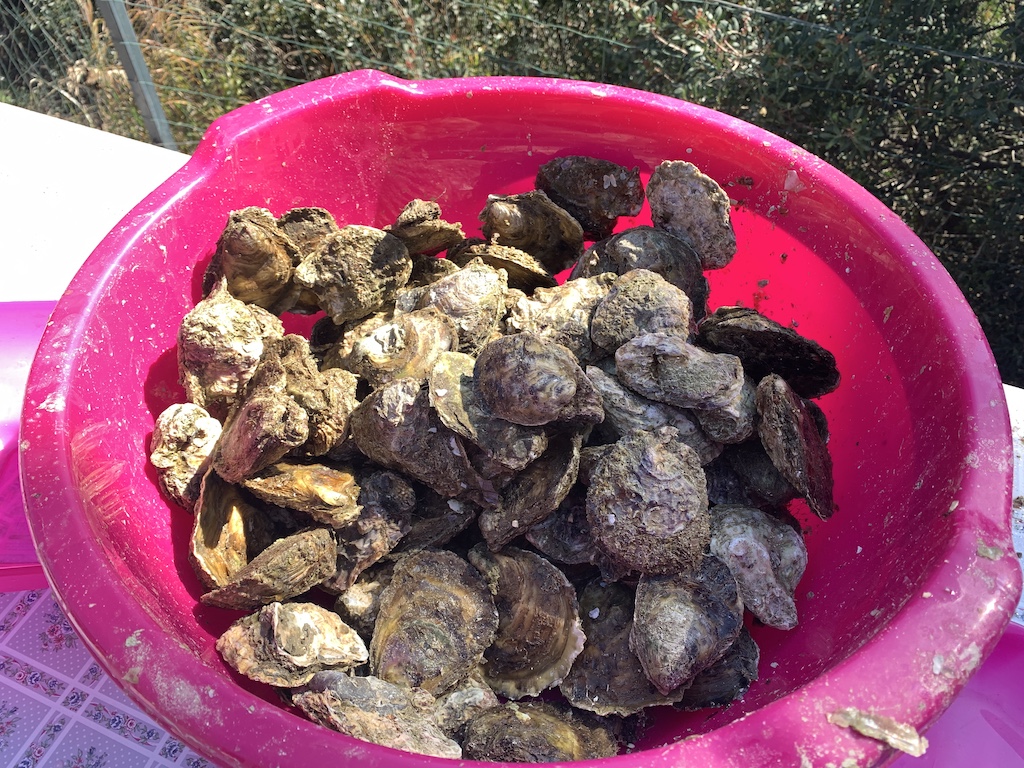 The local oysters found in Mali Ston are called European Oysters, or Ostrea Edulis.
The local oysters found in Mali Ston are called European Oysters, or Ostrea Edulis.
The festival returns
But alas, covid-19 cancelled the festival two years ago and my plans have been on hold, until now. A trip to Bistrina for the annual oyster festival in Mali Ston was a chance to both taste the shellfish this area is famous for and wash it down with vino that puts the Pelješac peninsula on any wine-lover’s radar. The funny thing is, I grew up on the Atlantic Ocean and I adore all seafood, except oysters. I was willing to give them a try in Croatia based on the reputation, but I was hoping there would be more.
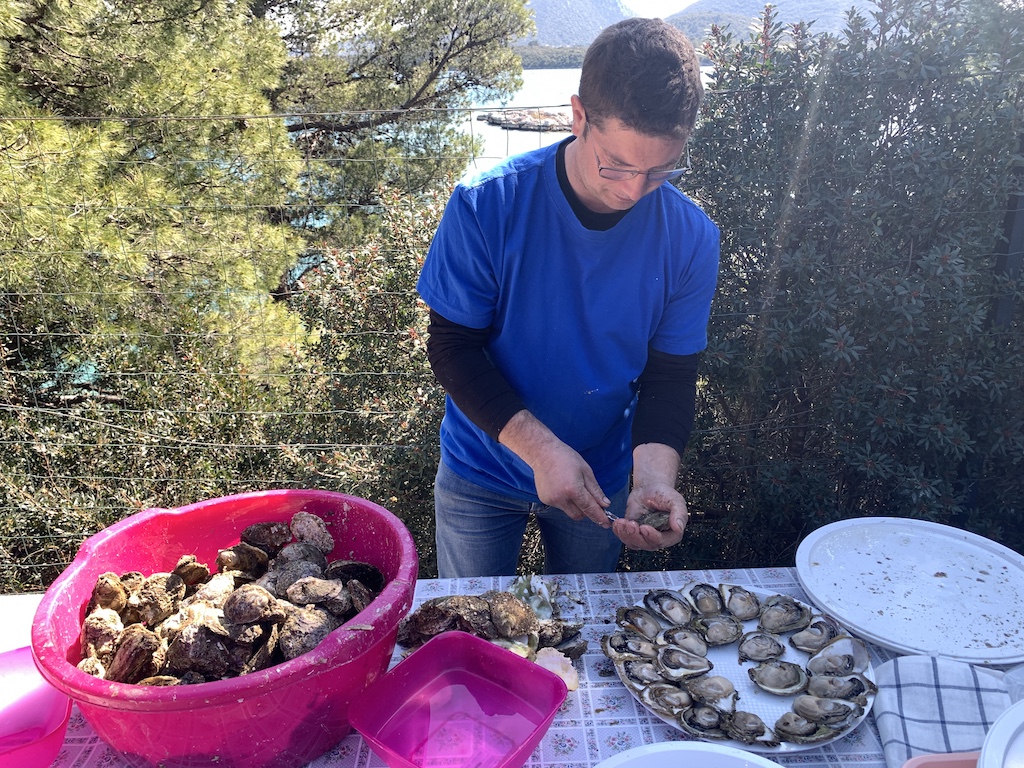 Farming and harvesting oysters in Mali Ston dates back to the Roman days of the Republic of Ragusa (1358-1808) and was a source of wealth that exceeded salt.
Farming and harvesting oysters in Mali Ston dates back to the Roman days of the Republic of Ragusa (1358-1808) and was a source of wealth that exceeded salt.
I joked with a friend that my favorite part of the festival was carrying my wine glass around on my neck, which was a first for me. It looked ridiculous but it was convenient for hands-free slurping of oysters and also more wine, lol. When it came to tasting, the best food tip I received all day was to simply squeeze lemon on the oysters and then suck them off the shell. I can’t say I tasted anything, except for the lemon juice, but it was fun.
Father’s Day
Not accidentally, the festival coincides with the Feast of St. Joseph every March 19, also called Saint Joseph’s Day. It has to do with the Feast falling during lent and abstinence from meat. This is Father’s Day in Croatia and named after Jesus’s dad. Christian heritage here believes he’s the patron saint of Croatian people and a protector of families and carpenters/workers.
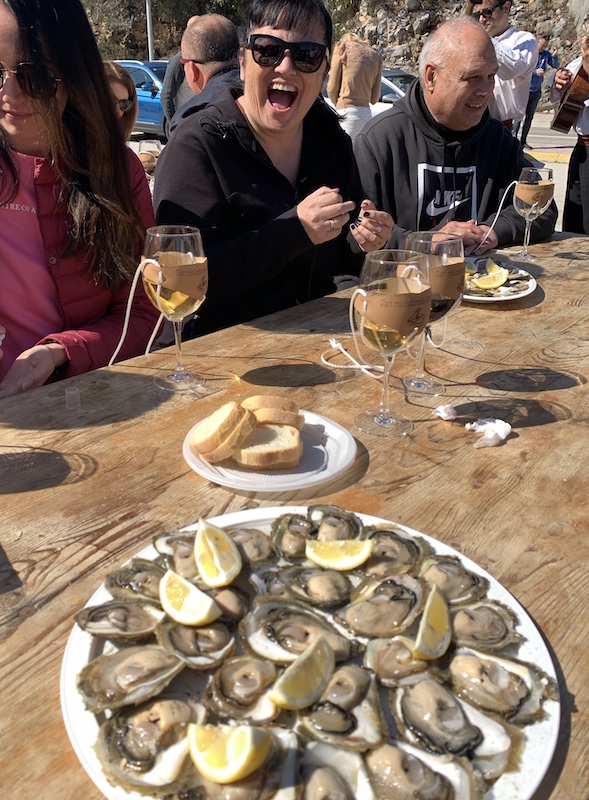 Chowing down with fellow Cromads.
Chowing down with fellow Cromads.
Cultivation techniques
Walking around Bistrina, I noticed clusters of plastic markers throughout the bay. Farmers use a system with cages and a technique of suspending oysters in the water to help them grow. To indicate how seriously people take this business, a nearby mariculture laboratory—part of the University of Dubrovnik—conducts research, testing, and quality checks on the oysters and the mussels from these beds.
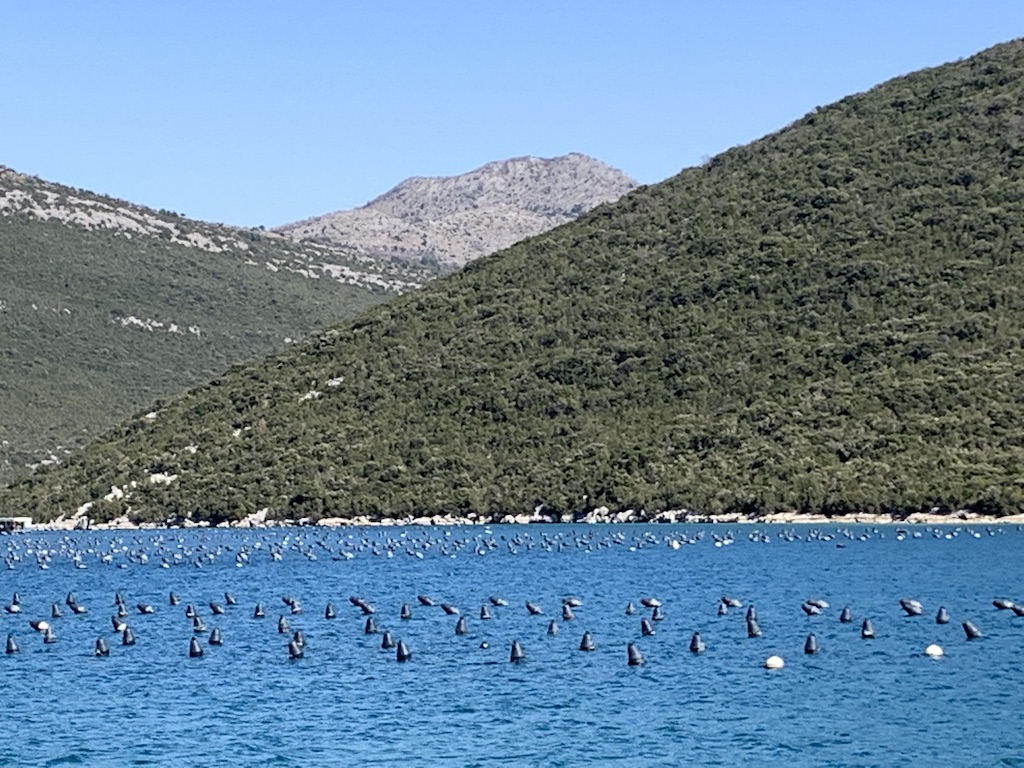 Plastic markers in the bay indicate where the oyster beds are. Minerals and phytoplankton in the salty water contribute to the high-quality of the shellfish.
Plastic markers in the bay indicate where the oyster beds are. Minerals and phytoplankton in the salty water contribute to the high-quality of the shellfish.
Cultivation dates back to the 14th century and peaked in the 1980s with 3,000 tons of mussels and two million oysters produced annually.
 Local musicians play favorite Dalmatian tunes.
Local musicians play favorite Dalmatian tunes.
Natural sea salt, high-quality freshwater, and favorable environmental conditions are the secret sauce for producing exceptional shellfish in this area, and the corresponding wealth. Rumor has it that Roman aristocrats from the days of the Ragusan Republic were even paid in oysters instead of money. So, would they eat their money??
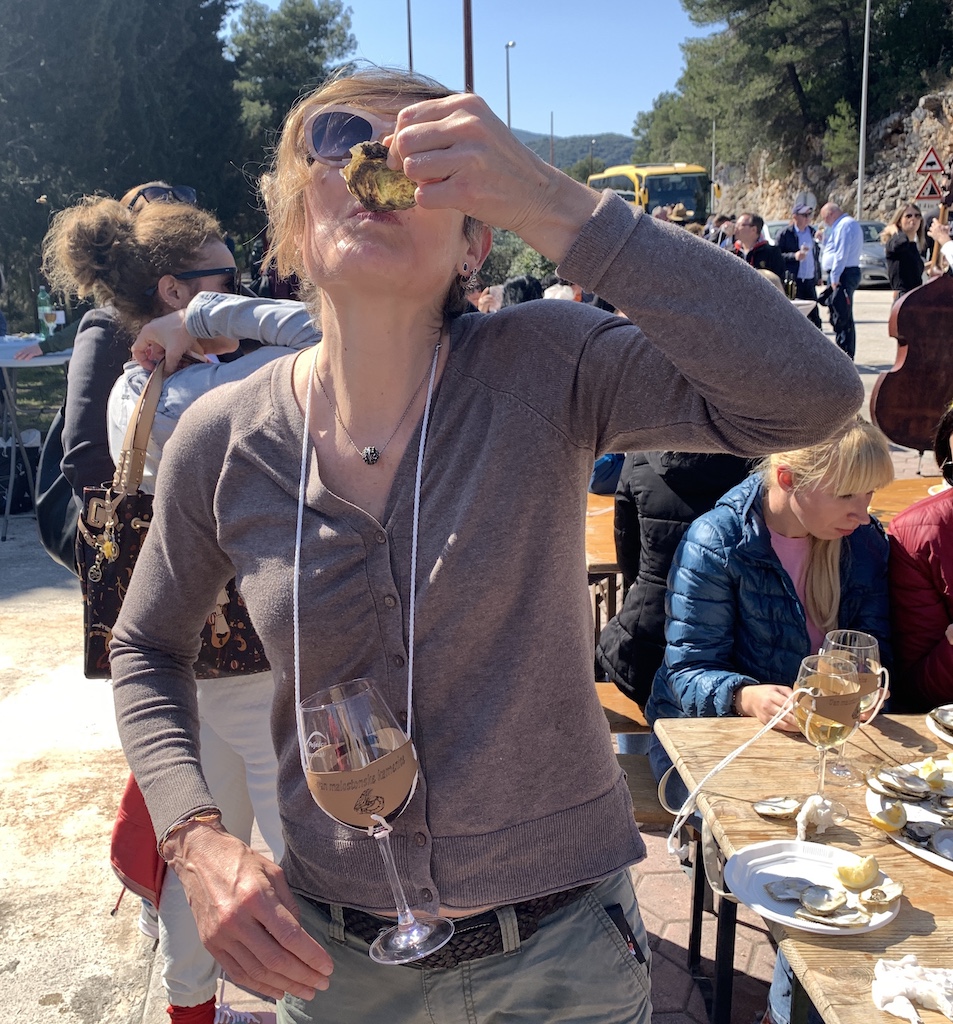 The author keeps her wine glass close to sip and slurp.
The author keeps her wine glass close to sip and slurp.
Ston saltworks
A different system exists over at Ston with an equally impressive history: the saltworks. Salt pans look like a grid dividing the surface of the water. Traditional production methods to extract salt using the sun and wind have remained the same for centuries and everything is still done by hand. Again, healthy environmental conditions are perfect for creating a superior product.
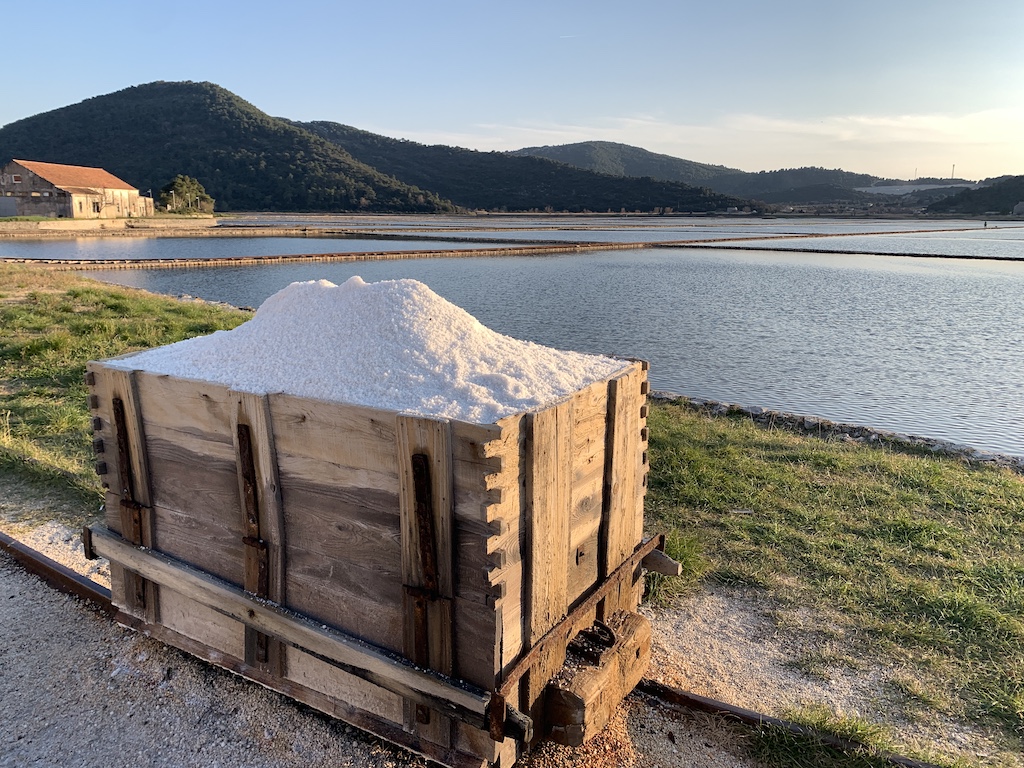 Salt has been a source of wealth in Ston for centuries, also since the Republic of Ragusa ran things here. These saltworks are the largest in Europe.
Salt has been a source of wealth in Ston for centuries, also since the Republic of Ragusa ran things here. These saltworks are the largest in Europe.
As with the shellfish, Ston’s “white gold” dates back to the Middle Ages as a white-hot commodity. In fact, salt sparked wars and influenced trade routes. Wowza!
Rich history
The day turned out to be much more than hitting up a festival. Ston and Mali Ston have a rich history of tradition, labor, and economics in shellfish and salt, and there’s the famous Pelješac wine. The walls of Ston are another highlight as one of the largest preserved fortification systems in the world, but that’s another story. And let’s not forget the Feast and Father’s Day.
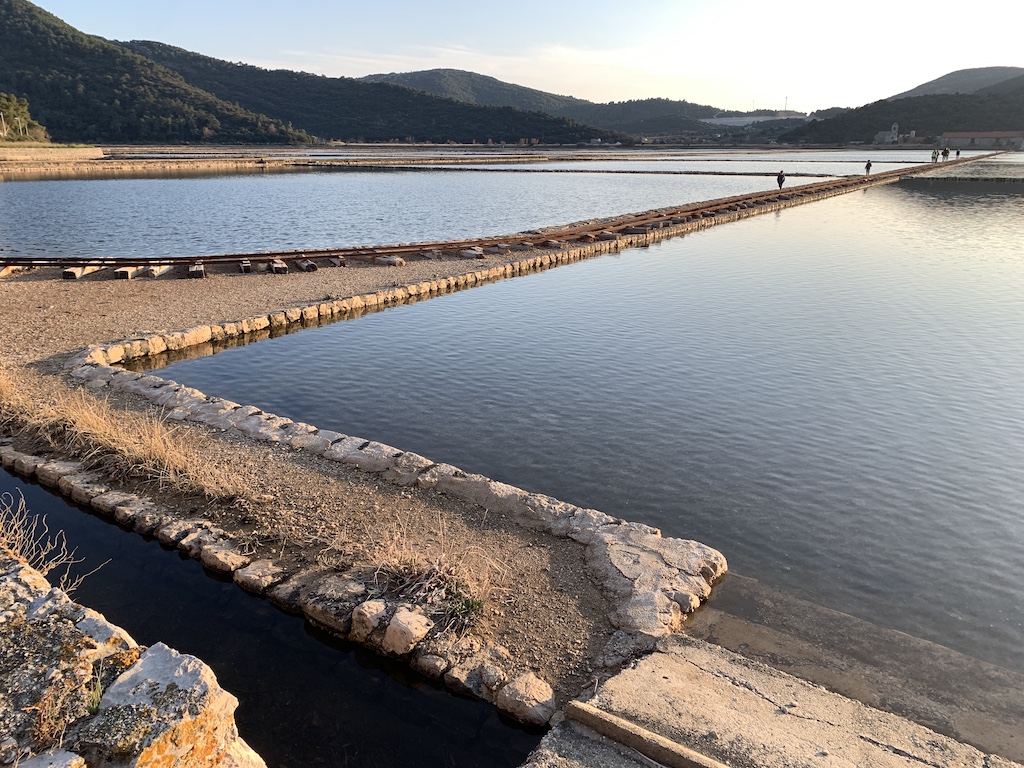 Gates are opened to let water flood into the salt pans. When the water evaporates, the salt is left behind. This process is repeated over and over and the salt is harvested once a year.
Gates are opened to let water flood into the salt pans. When the water evaporates, the salt is left behind. This process is repeated over and over and the salt is harvested once a year.
I love piecing together the cultural connections in this region. It’s one of the reasons I love to travel, for authentic experiences and learning about places that are so different from my home. As a bonus, I got to spend the day with adventurous new friends and digital nomads. The trip was organized by the Cromads travel club.
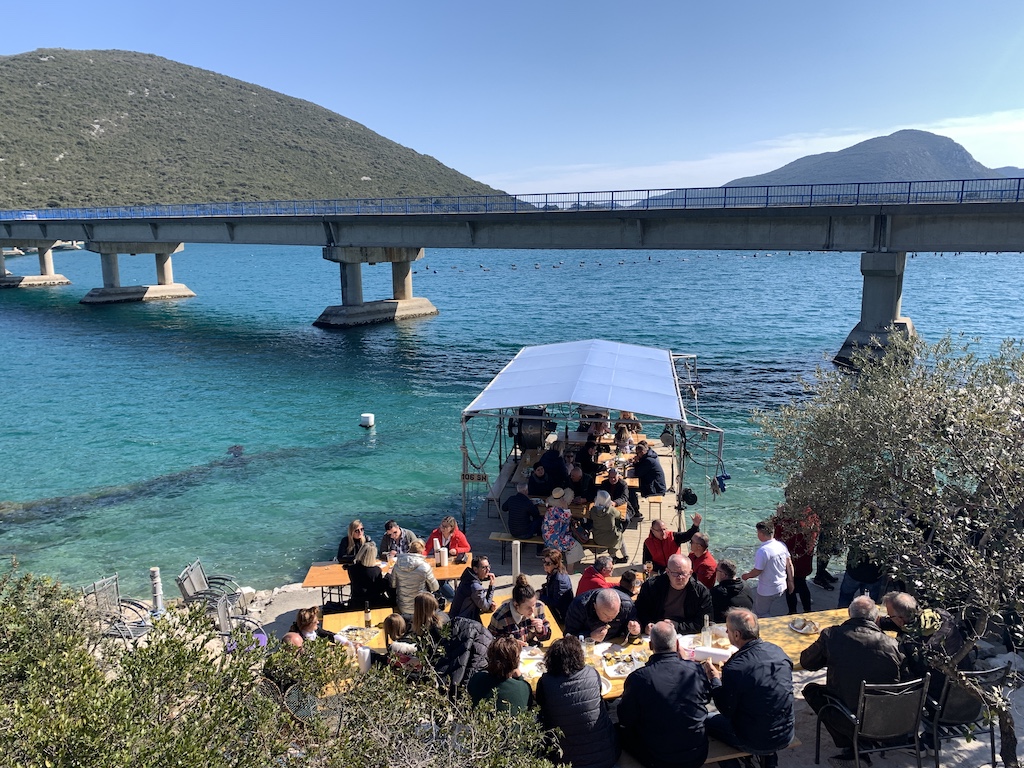 Dining on the Bistrina Bay with a beautiful view of the clear blue water.
Dining on the Bistrina Bay with a beautiful view of the clear blue water.
Story and photographs ©2022, Cyndie Burkhardt. https://photo-diaries.com
Learn more at TCN’s Digital Nomads channel.

